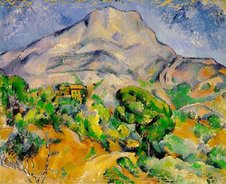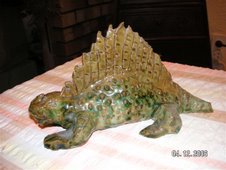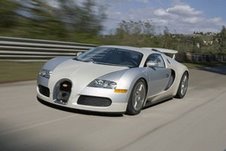They're saying now that we should regard water - fresh water that is - as a precious natural resource. I couldn't agree more, and it is one of the lunacies of our age that we use it to flush loos. What's particularly indefensible is that we use an entire cistern full of water merely to flush away a number 1. I once recall reading Prince Foot-in -Mouth Philip saying as much, so if as I suspect, these matters get discussed over those oh-so-hygienic tupperware boxes at the Royal breakfast table, then I make no apology for raising them here, especially as we all need some light relief from the last topic.
Of course some people have loos with those half and full-flush options. Mine is even cleverer, though it took me a while to realise what we had inherited from our predecessor. It has a clever angled flap: give it a brief jab, and you get a brief flush- half a second's worth, no more. The longer you hold before releasing the more water you get. I cannot understand why the design is not compulsory, especially in SE England. Incidentally, were you aware that Southend-on Sea gets less annual rainfall (typically 24ins in old money) than Jerusalem with 26 ?
The BBC "Have Your Say" has recently had long-running threads on water conservation, metering etc, a topic that interests me, and I've posted once or twice. I was pleased to see at least one other poster announce that he and his partner had a policy of not bothering to flush number 1s during the night. That's our policy too, if only that it prevents waking the other partner with the sound of emptying and re-filling cisterns. But there is a downside, as we know, when that solution of urea and mineral salts sits in a loo bowl for any length of time. It's what on the TV ads they call "limescale". And it's apparently something that we should all be concerned about, along with its associated germs; we should all be loading up with harsh corrosive or disinfectant chemicals at the supermarket, defending our homes against this threat to our aesthetic senses and body defences. At a price.
In fact there's probably little or no limescale in that chalky-looking discoloured deposit that builds up in loos, even when the number 1s sit for hours before flushing. Limescale is calcium carbonate. It requires prolonged evaporation of hard water to form limescale, and then it would form a ring round the surface, not the submerged part of the porcelain. Of course, those TV advertisers want us to believe it's limescale, like we get in our kettles and irons, because we all know what difficult stuff it is to shift. But the stuff that forms in most loos is in fact struvite. Not many people know that, apart from Michael Caine, myself, and the chap who provided the entry for Wikipedia:
Struvite is ammonium magnesium phosphate It's the same stuff that causes kidney and bladderstones in some people. Its chemical formula is (NH4)MgPO4·6(H2O).
How is it formed? Urine, as I said earlier, is essentially a solution of urea and mineral salts, and is almost bacteriologically sterile when freshly voided (assuming one does not have kidney or bladder infection. ).
Urea ? It's a simple nitrogenous compound, formed by breakdown of amino acids and proteins. One can think of urea as a compound of two waste products, ammonia and carbon dioxide, and its solution ( and fresh urine) is usually weakly acid. But when it stands, bacteria grow which split it up into ammonia and carbon dioxide. The pH rises (more alkaline), and the ammonia, on becoming ammonium salt, then reacts with the magnesium and phosphate to form the insoluble struvite as the "limescale" deposit.
But unlike limestone, struvite is soft and relatively non-adherent. When the spirit moves me, I grab a toilet brush, and with a few sweeps and a flush, it's gone, and the loo pan is returned to its pristine state (except for the rim, which does accumulate genuine limescale, effectively an early stage of stalactite formation due to hang-up and evaporation of drips).
My wife, like most women, has little time for chemical theory, and she has her unshiftable routines, one of which is tipping strong bleach into the loo if I have neglected to do a brush job.
She did that the other day, thus prompting the idea for this post. You see, I hate to double flush, first to remove the bleach, and then a second time, to return my voided excreta to nature's carbon and nitrogen cycles . So I do something that I know from both theory and experience will provoke a vigorous chemical reaction: I add my contribution to the bleach. The effect is immediate: vigorous bubbling and that unmistakeable smell of one of the most unstable, dangerous chemicals known to science - nitrogen trichloride. Yes, the urea reacts with chlorine in the bleach to make the compound NCl3.
Older folk reading this may have smelt this substance before without realising it. Remember visits to public swimming pools in the bad old days, when one returned with smarting eyes or worse (eg asthma attacks), complaining about "chlorine". We now know that the distinctive strong stale smell was due not to chlorine, but nitrogen trichloride. No prizes for guessing what bathers, at least antisocial ones, were adding to the water that reacted with the chlorine. Actually, we all added some urea in the form of body perspiration.
How does one remove nitrogen trichloride from a polluted, overcrowded pool ? The answer may surprise, assuming you haven't come across it already. It's to add extra chlorine, "chlorine shock treatment" as it's called, which then breaks down the nitrogen trichloride.
Nitrogen trichloride was a compound that fascinated the early pioneers of chemistry. It's absurdly easy to generate in the lab, by mixing two common chemicals. Get close and you may see oily drops of liquid. It then tends to explode violently, blinding you, blowing off your nose or fingers or worse. My favourite chemistry textbook from the 50s listed distinguished chemists who had all been injured or killed in trying to isolate and tame the stuff. One can't. It's chemically highly unstable. Some of you may have heard of a close relative, nitrogen tri-iodide. It's made by adding a few drops of strong ammonia solution to crystals of iodine. When dry, it's reckoned it takes only a fly landing on it to detonate it. It makes a sharp crackling sound, a violet cloud of iodine, but is rarely dangerous if simply trodden on, assuming you're not in bare feet. My old pal Pete R. from school left a trail of the stuff up a flight of stairs reserved for staff and prefects, and in so doing, blew (I reckoned) his Cambridge entrance. I know because I was in earshot of the dressing -down he got from Joey, the chemistry master. So despite staying a 3rd year in the 6th form, he had to content himself with a place at Birmingham, along with nine others of his year, no less, myself included. Birmingham University was the fashion that year. I can still see the expression on the face of the Bristol interviewer when he saw I had placed Bristol second behind Birmingham on my UCCA form. If looks could kill ...... They offered me a place, which I rejected. Probably the worst decision of my entire life, not to take the Bristol offer, but that's a story for another day.









No comments:
Post a Comment